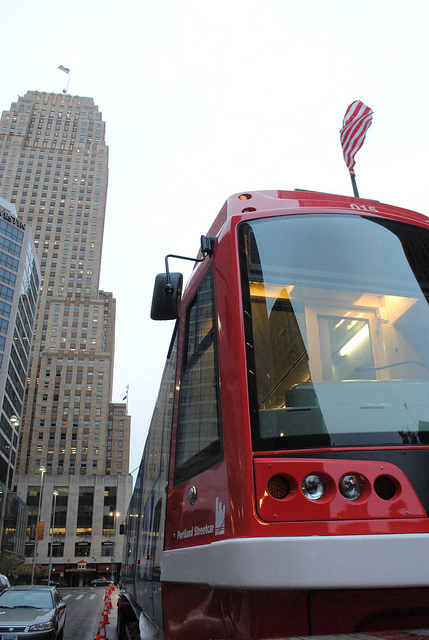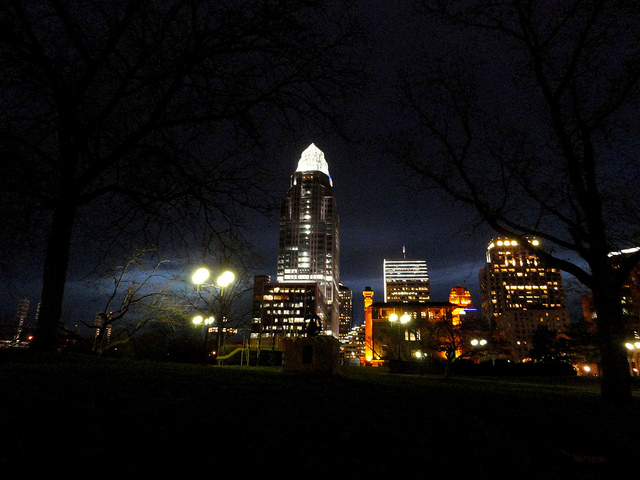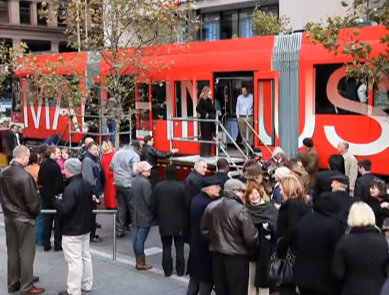 Streetcar supporters were outraged when they heard Ohio Governor John Kasich (R) was considering pulling as much as $52 million in state support from the Cincinnati Streetcar project. Such of move would have left the project with a financing gap and would have resulted in reduced scope or delayed construction. But according to some, a move of that nature by the governor may not carry legal merit.
Streetcar supporters were outraged when they heard Ohio Governor John Kasich (R) was considering pulling as much as $52 million in state support from the Cincinnati Streetcar project. Such of move would have left the project with a financing gap and would have resulted in reduced scope or delayed construction. But according to some, a move of that nature by the governor may not carry legal merit.
The premise for cutting the funds for Cincinnati’s modern streetcar system is that the State of Ohio is facing an $8 billion budget deficit, and state leaders are examining many ways to cut that figure. But according to Ken Prendergast, executive director of All Aboard Ohio, those funds awarded to the Cincinnati Streetcar would not actually impact the state budget.
“The funds to be cut are federal transportation dollars. If they are not used on the streetcar, then they would be used on a transportation project with a lower TRAC ranking,” Prendergast explained. “In other words, Kasich is giving Cincinnati a false choice.”
Prendergast is referring to the Ohio Department of Transportation’s (ODOT) Transportation Review Advisory Council (TRAC) which was first established in 1998 to depoliticize the allocation of transportation funding. TRAC awards money based on a merit score, and the Cincinnati Streetcar earned 84 points which placed it as the highest-scoring transportation project in the entire state.
Local officials close to the Cincinnati Streetcar project believe Governor Kasich is attempting to strip the funds from the streetcar and reallocated them to the $2 billion Brent Spence Bridge replacement which scored a paltry 44 points on TRAC’s transportation list. The other reality is that the money could go to the Eastern Corridor plan which had three components scoring 34, 39 and 48 points – all well below the Cincinnati Streetcar’s state-leading 84 points.
“Our governor is making a false argument that pulling back this federal money will save the state money,” said Prendergast. “The streetcar funding has nothing to do with the state’s deficit. If it is not used for the streetcar, it will go to a lower-ranked Ohio road project.”
Two separate studies estimate that the modern streetcar project will stimulate approximately $1.5 billion of new investment in Downtown and Over-the-Rhine, or roughly 15 times the cost of the streetcar project. The Cincinnati Streetcar’s second phase Uptown is also expected to make large economic impacts, and has scored a 71.5 points on TRAC’s list.
“Why is our governor against redeveloping Cincinnati’s downtown and Over-the-Rhine areas with the streetcar? Steel rails offer a far superior path to jobs and growth and clean air than yet another asphalt road pitted with potholes,” concluded Jack Shaner, deputy director of the Ohio Environmental Council.
According to Prendergast, the end result may be a another legal battle for the controversial governor. He says that at attempt to move the funds from the streetcar to another, lower-ranking transportation project, that Cincinnati officials would have legal grounds to sue the state for not following its own criteria in awarding federal transportation funds.
Modern Streetcar in Cincinnati photograph by UrbanCincy contributor Thadd Fiala.





